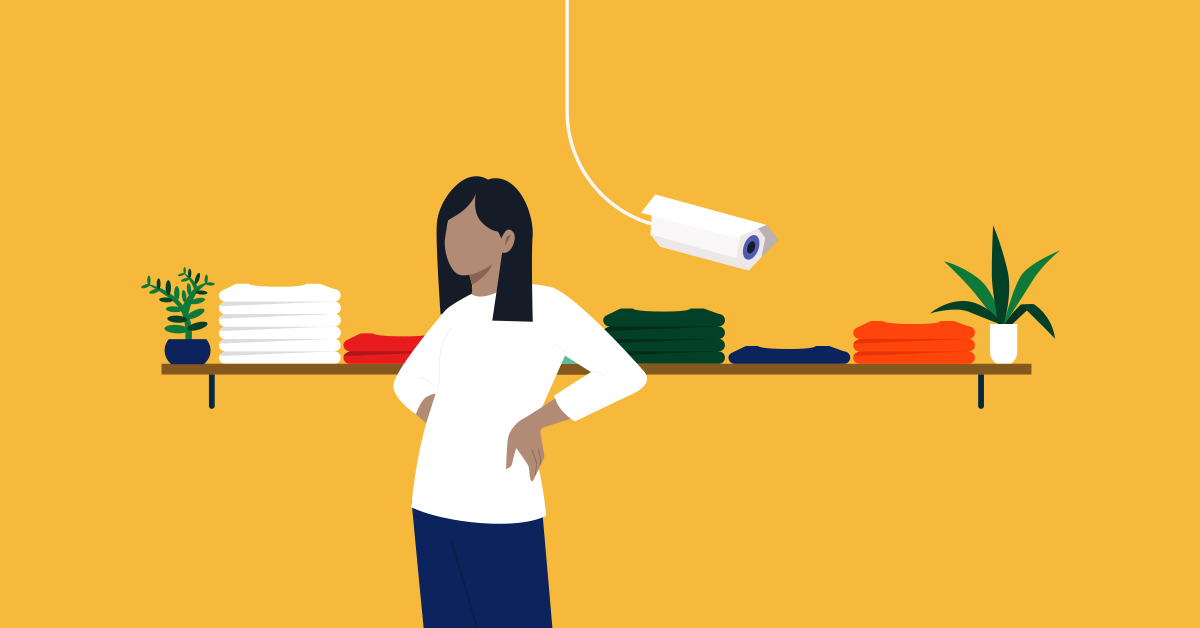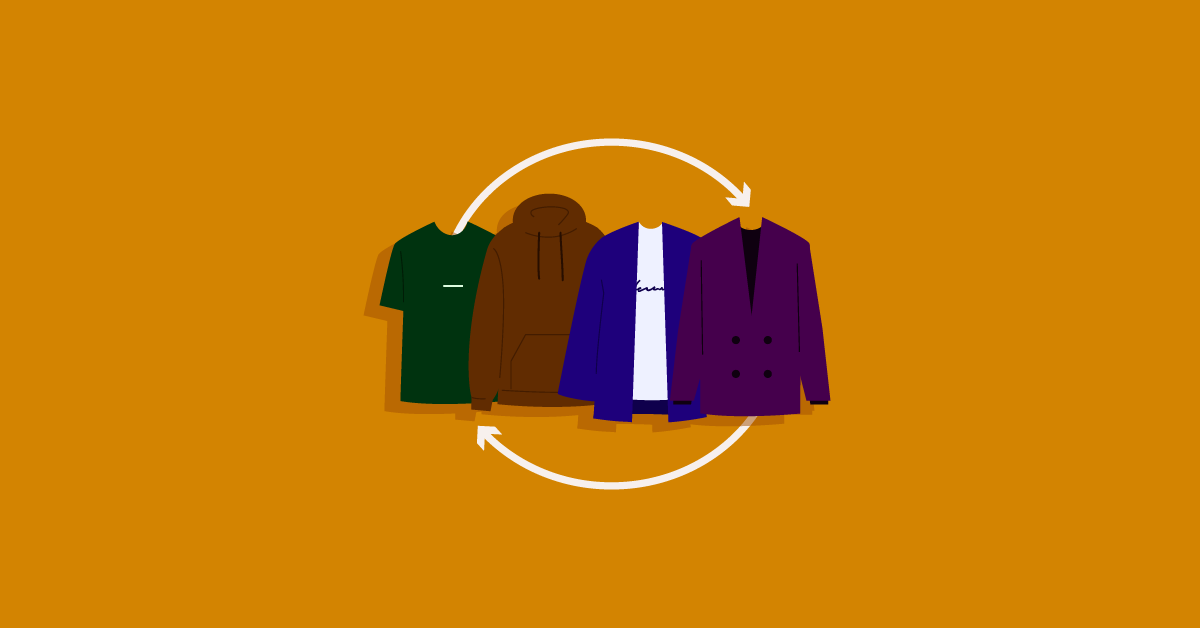
Retail theft is on the rise. Between 2015 and 2020, theft increased from 1.4% to 1.6%. With the retail industry generating $3.1 billion brick-and-mortar sales in the United States in 2020, that seemingly meager 1.6% translates to nearly $50 billion in retail inventory shrinkage. Of these losses, $2.1 billion can be attributed to organized crime—while fraud, internal theft, damaged goods, and other sources are responsible for the rest.
While no store is ever immune from the threat of retail loss, this guide to retail loss prevention can help you mitigate the effects. You’ll learn:
- What retail loss prevention is
- How to prevent retail loss
- Which theft-protection devices you need
- How to staff for loss prevention
- How to train staff for loss prevention
Use our guide to help grow your retail store strategy.Learn all about how to run your retail store smarter with our guide
What is retail loss prevention?
Retail loss prevention involves implementing strategies to avoid losing money due to theft and other inventory shrinkage sources. Some of these strategies include hiring security staff to deter theft and requiring manager approvals for discounts. Loss comes from a variety of sources including shoplifting, fraud, internal theft, administrative errors, vendor errors, and damaged goods.
How to prevent theft-related retail loss
Shoplifting is one of the most common causes of loss for retailers. Fortunately, it’s also one of the easiest to deter. These three steps are applicable and useful to most kinds of stores.
1. Use covert security devices
There are a number of security devices you can implement to prevent shoplifting and make shoplifters easier to catch. Security cameras and mirrors can help staff see more than they could with the naked eye. Devices like metal detectors and garment tags let you know if a customer is walking out with unpaid merchandise.
2. Hire security staff to deter theft
While you should train all staff to recognize and deter theft, it can be difficult for store associates to keep an eye on merchandise if they’re helping a customer or managing inventory. When you hire a security guard, you’ll have someone on staff who is dedicated to loss prevention.
In most cases, a security guard’s presence alone can deter shoplifting attempts. And, when theft does occur, security staff can take appropriate action.
3. Train staff to recognize theft – and prevent other kinds of loss
Store associates are the first defense against retail loss. Train staff to recognize signs of shoplifting, which we’ll cover later in this guide. Beyond shoplifting, staff should also learn to catch returns fraud and handle products properly to prevent inventory from being damaged.
Your guide to security and theft-prevention devices
Here’s a closer look at the crucial security devices you should consider using at your store.
CCTV cameras
Also known as security cameras, closed-circuit television devices help staff monitor parts of the store that they wouldn’t be able to see with their own eyes. Cameras also provide evidence of theft, when needed. Place surveillance cameras in corners, behind the checkout counter, outside of fitting rooms and restrooms, and near entrances and exits.
If you have security staff, that team member can monitor security footage as part of their role. Otherwise, place the monitoring screen by the checkout counter or in the break room so that store associates can keep an eye on it.
While it’s a smart idea to have functional cameras, even dummy cameras can help deter theft. Shoplifters will think twice about stealing if they think they could be caught or tracked down after the fact.
Mirrors
Mirrors don’t just make a store feel bigger, bring in more light, and add intrigue to a space. They can also help prevent theft.
Place mirrors strategically throughout the shop in areas that might be difficult to see otherwise from the checkout counter, or wherever staff are usually stationed. A mirror hung on a downwards angle at the top of the wall at the far end of the store from the cash wrap can help employees see what’s going on farther away. Mirrors that are placed in corners, or that help staff see around them, are also helpful.
Garment tags
If your store sells clothes, you may want to consider employing garment tags to deter theft. There are many types of garment tags on the market. However, what they all have in common is that they’re pinned to merchandise and can only be removed by a special device that employees have access to.
Traditional garment tags set off an alarm if a shopper gets too close to a store’s exit. Others spill ink on the item – and shoplifters’ hands – if they attempt to remove the tags. Other garment tags are only visual and don’t set off alarms. Instead, they deter shoplifting even if you don’t have detectors on your doors.
Locks
There are a variety of locks you can implement to prevent theft at your store. Use them to secure display merchandise, such as electronics or furniture, to ensure no one takes them.
Consider using locked displays, like the kind you might find if you’re shopping for razors at a pharmacy, to prevent theft of items that are stolen often, of high value, or require proof of age to purchase. With a locked display, customers have to ask employees to unlock them. Staff supervision creates an added layer of security.
Hiring vs. outsourcing loss prevention staff
Is it better to outsource security personnel or hire a security guard in-house? There’s a lot to consider before making that choice.
When you hire an in-house security staff member, they are an integrated part of your team. By becoming part of the staff, they are loyal and committed to the role, and care more about doing a good job than an outsourced security guard might.
However, hiring a security guard comes with a lot of administrative work, like posting a job, qualifying candidates, training, and adding another person to your payroll. Plus, if you don’t have expertise in security, chances are you may be unqualified to train a security guard.
The benefit of working with an agency that provides security services is that there’s less admin work involved. However, you may not have the same guard every day, so they may not feel like part of the team or as committed to your business’ success as an in-house security guard.
No matter how you decide to engage security personnel, make sure they have experience and are fast and strong enough to catch shoplifters, if it ever comes to that.
Retail loss prevention training for staff
Staff can be your best defense against shoplifting. Create a loss prevention training program so staff can recognize the signs of shoplifting and take proper action when it’s needed.
How to spot a shoplifter
Anyone can be a shoplifter. Familiarize staff with these common shoplifting behaviors and tactics from our guide on how to spot a shoplifter:
-
- Suspicious behavior: Train staff on suspicious behavior that’s usually tied to shoplifting, such as taking a long time in a fitting room, paying more attention to staff than to merchandise, and avoiding eye contact.
- Past offenders: Someone who has tried to or successfully stolen from your store in the past may try to do it again. Print photos of past offenders from security footage in the break room so staff can learn to recognize them. Beyond training your staff, collaborate with other retailers near you. Share images of shoplifters you’ve encountered and they’ll reciprocate.
- Groups: Shoplifters who work with accomplices typically have one person distract a store associate with a time-consuming question, while the other person steals.
- Atypical customers: Train staff to keep an eye on people who don’t look like your typical customer. For example, if you work in a maternity store, it would be odd to see a group of teenage boys “shopping” around your store.
- Large bags and baggy clothing: Oversized clothes and bags (backpack, suitcase, grocery bag, etc.) can be useful for hiding and transporting stolen merchandise. For that reason, it’s a good idea to train staff to be wary of customers with oversized carrying vessels.
Understand what counts as shoplifting, and what doesn’t
As part of your loss prevention training program, it’s important to teach staff what counts as shoplifting, and what doesn’t. In order to detain a shoplifter, you need proof that they took an item without intending to pay. Seeing someone put merchandise in their bag or under their clothing isn’t enough, since they might end up putting the item back. Staff members need to see the person leave the store without paying for merchandise to take action.
What to do when you’ve caught someone shoplifting
When staff have correctly identified a case of shoplifting, they need to know what to do next. At the first sign of suspicious behavior, they should notify security personnel to monitor the situation.
After a shopper leaves the store without paying for an item, your security guard should approach the shoplifter, explain what they saw them do, ask them to return the merchandise, and tell them to come back to follow you back to the store. Then, call the police and wait with the shoplifter.
Don’t forget to train staff to prioritize customer and employee safety while handling shoplifting.
Wrapping up: Retail loss prevention strategies
Security devices and thorough training are your best tactics for inventory shrinkage and retail loss prevention. With a retail POS system like Lightspeed, you can add another layer of protection. Lightspeed’s inventory management and reporting features can help you spot inventory anomalies and identify theft. Watch a demo of Lightspeed today.

News you care about. Tips you can use.
Everything your business needs to grow, delivered straight to your inbox.



